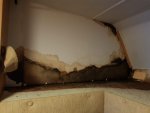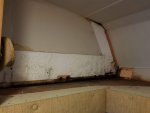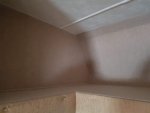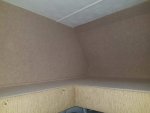Just noticed you said yours is a 2007 Elddis Autoquest 140... mine is a January 2006 Compass Avantgarde 140 (55 plate). I would think they are identical, other than stuff like the seat covers and woodwork of course.
Mine was 5 years old when we got it and we straight away noticed it had a leaky side rail that affected the overhead but it was under warranty from the dealer, so they replaced the rails without us ever knowing the cost. Shame, or I could have been more help. A couple of years ago, I found a slightly damp bit in a small central area of the overhead and this time it was the roof seam that runs across the width of the van, very close to the front. They cleaned the seam and resealed it for just over £100. Other than those issues, it's been a great van and I wouldn't part with it for the world.
If there is damp in yours and it's coming down that front corner as they've indicated, I'd suspect the side-rail. Is there any sign of damp in the cab itself, on the upright bit of the frame that borders the the windscreen? (Sorry, I don't know the technical term!) That's how we knew we had a problem. It's a similar sort of grey fabric on the uprights and they were clearly damp and getting water stained. Having said that, I don't think I could trust a word he says, based on his
mainly thinking there's damp because of the grey felting! As I said, it's standard kit. I'm not sure if your readings of 10-14 would constitute a problem? Someone might correct me if I'm wrong. My very slight seam leak produced a highly localised reading of 25-35... that's more like it in my experience. Second opinion called for!
Good luck and don't let it put you off... we all have teething problems

Edit to say... I've just seen your photos and our vans could be twins! I'm told the rubber bit along the rails is only there to cover the screws and keep it tidy, so that's not an indication there's anything wrong underneath the rails. You can replace the rubber trim if it's damaged... I think it pushes in with a screwdriver type gizmo. I honestly wouldn't know by looking if there's anything wrong but I do trust in my friend the damp meter

Also, with readings as high as he said, the grey fabric would definitely feel wet... mine did that first time.




